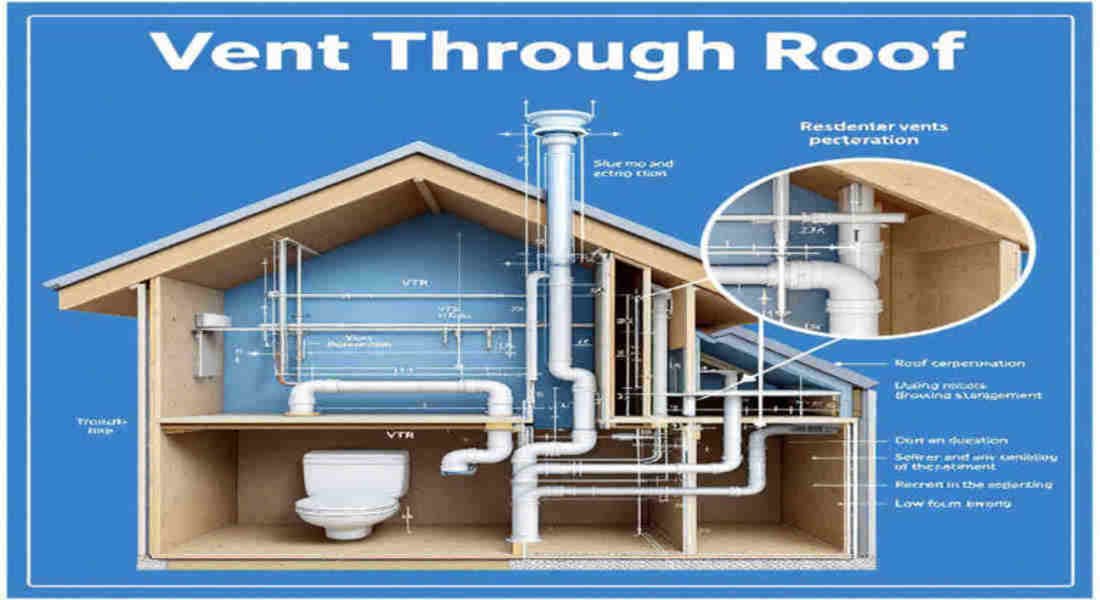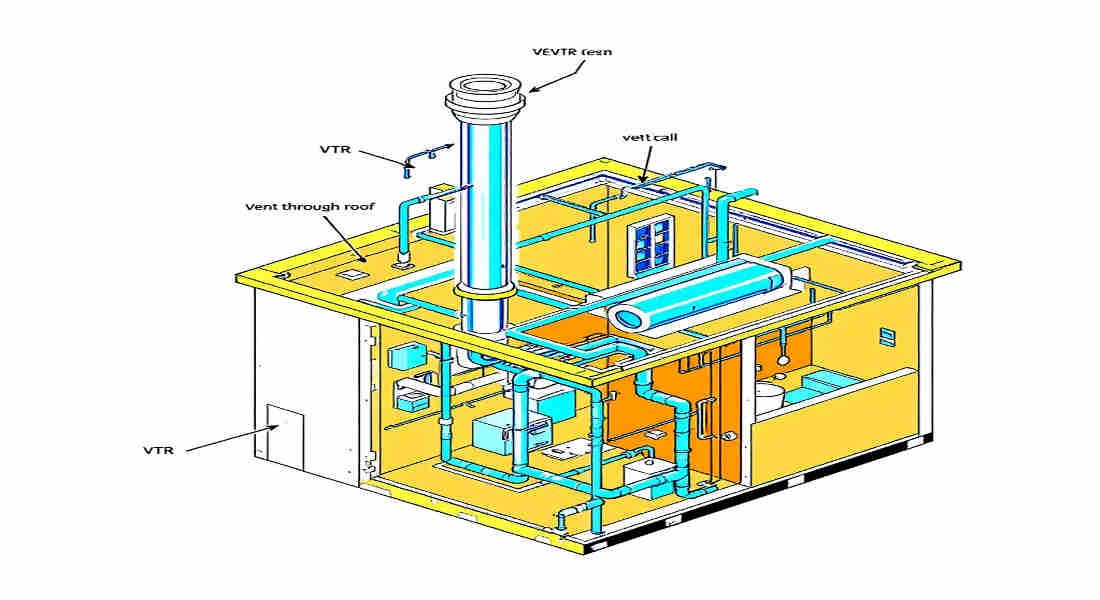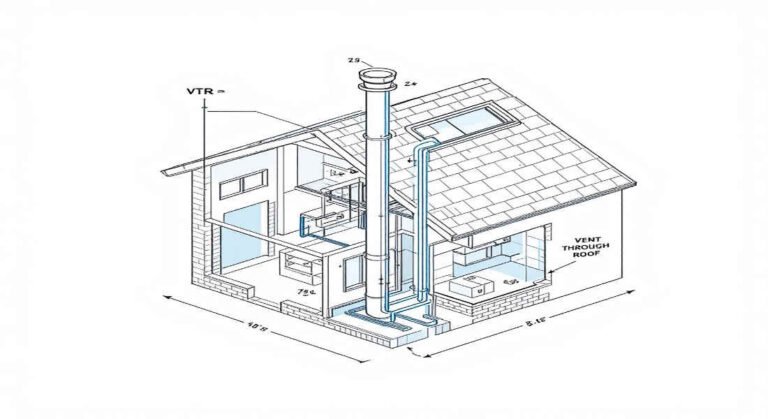When it comes to plumbing systems in homes, one essential component often goes unnoticed but plays a critical role in maintaining the health and safety of your household — the VTR. For most homeowners, understanding their plumbing system can be overwhelming, especially when technical terms like “VTR” are used.
Plumbing is one of the foundational systems in any home. It ensures efficient water flow, waste removal, and ventilation to maintain a safe and sanitary environment. While most people are familiar with pipes and drains, fewer are aware of the role ventilation plays in keeping everything functioning as it should.
One crucial part of the plumbing system is the VTR, an acronym that stands for Vent Through Roof. This system helps regulate air pressure in your plumbing and ensures harmful sewer gases are safely released outdoors. Without it, your home’s plumbing system would struggle to function properly — leading to unpleasant odors, health hazards, and even costly repairs.
 Understanding VTR in Home Plumbing
Understanding VTR in Home Plumbing
To fully appreciate the importance of a VTR, you need to first understand what it is and how it works.
Definition of VTR
In the context of plumbing, VTR stands for “Vent Through Roof.” It refers to a type of plumbing vent that extends through the roof of your home. Its primary purpose is to allow air to flow in and out of your plumbing system, ensuring proper pressure balance and preventing sewer gases from building up inside your house.
Think of it like the ventilation system for your plumbing. Just as your lungs need air to function, your plumbing system needs airflow through the VTR to keep everything running smoothly.
Basic Function of a VTR
The VTR serves two key purposes in your plumbing system:
- Maintaining Air Pressure Balance
- When water flows through your pipes (e.g., from flushing a toilet or draining a sink), it creates a vacuum that can disrupt the smooth flow of water. The VTR allows air to enter the system, stabilizing the pressure and preventing issues like gurgling drains or slow water flow.
- Removing Harmful Sewer Gases
- Sewer gases, such as methane, can accumulate in plumbing systems if they aren’t vented properly. The VTR directs these gases safely out through the roof, preventing them from entering your home and causing unpleasant odors or health risks.
How VTR Fits into the Overall Plumbing System
The VTR works in conjunction with other components, such as vent stacks, branch vents, and P-traps, to ensure seamless operation of your plumbing system.
- Vent Stacks and Branch Vents: These are connected to the main plumbing system and lead directly to the VTR, allowing for proper airflow and venting.
- P-Traps: These U-shaped pipes hold a small amount of water to seal off sewer gases. The VTR plays a crucial role in maintaining the pressure required for P-traps to function effectively.
The Role of VTR in Plumbing Systems
The importance of VTR in your plumbing system cannot be overstated. Let’s explore how it contributes to the efficiency and safety of your home.
Pressure Equalization and Vacuum Prevention
Without a functioning VTR, water flowing through your pipes could create negative pressure, leading to vacuum formation. This can:
- Cause water seals in P-traps to break, allowing sewer gases to enter your home.
- Lead to slow drainage or air bubbles in your plumbing fixtures.
The VTR prevents these problems by allowing air into the system to equalize pressure.
Protection Against Sewer Gases
One of the most critical roles of a VTR is to block sewer gases from entering your home. Maintaining the water seal in P-traps ensures that gases like methane and hydrogen sulfide are vented outside, keeping your indoor air clean and safe.
Comparison with Other Vent Types
While the VTR is the most common form of plumbing vent, it’s not the only type. Here’s a quick comparison:
Vent Type Purpose Placement
Vent Through Roof (VTR) Balances air pressure in plumbing and removes sewer gases Extends through the roof.
Sanitary Vents Directly vent plumbing fixtures Installed within walls
Appliance Vents Specifically for boilers, heaters, etc. Connected to appliances
Roof Attic Vents Provide ventilation for the attic space Not connected to plumbing
Components Related to VTR
To better understand how a VTR works, let’s look at the components it interacts with.
P-Traps and Their Function
P-traps are found under sinks, tubs, and other fixtures. They hold a small amount of water to act as a barrier against sewer gases. Without proper air pressure from the VTR, the water in P-traps can evaporate, resulting in unpleasant odors.
Vent Stacks and Branch Vents
The vent stack is the main vertical pipe that connects the plumbing system to the VTR. Branch vents are smaller pipes that connect individual fixtures to the vent stack. Together, they form a network that ensures every part of your plumbing system is properly ventilated.
Materials Used in VTR and Vent Pipes
VTR pipes are typically made from durable materials such as:
- PVC or ABS: Commonly used for sanitary vents due to affordability and corrosion resistance.
- Metal: Often used for appliance vents that carry hot gases.
Common Issues Related to VTRs
Although VTRs are designed to last, they can develop issues over time. Here are a few common issues:
Sewer Smells and Their Causes
If you notice unpleasant odors in your home, it could indicate:
- A blocked VTR prevents sewer gases from escaping.
- Evaporated water in P-traps is often caused by infrequent use of fixtures.
Older Plumbing Systems and S-Traps
Older homes may have S-traps, which are less effective than modern P-traps and prone to losing their water seal. If your home has S-traps, consider upgrading to prevent venting issues.
Signs of VTR Problems
Be on the lookout for these symptoms of VTR issues:
- Gurgling sounds in drains
- Slow drainage or water backup
- Persistent sewer odors
Installation and Maintenance of VTR
How VTRs Are Installed Through the Roof
Proper installation is key to preventing leaks and ensuring optimal performance. A professional plumber will:
- Extend the vent pipe through the roof.
- Seal the opening with flashing to prevent water intrusion.
Maintenance Tips
To keep your VTR functioning well:
- Inspect for blockages caused by debris or bird nests.
- Check for cracks or leaks in the vent pipe.
- Schedule regular inspections with a plumber.
Why Understanding VTR Matters for Homeowners
As a homeowner, knowing about VTRs helps you:
- Maintain Indoor Air Quality: Proper venting prevents harmful gases from entering your home.
- Ensure Plumbing Efficiency: A well-vented system supports smooth drainage.
- Save Money: Addressing venting issues early can save you from costly repairs.
You may also read (water hammer arrestor at home).

